How to Build a Pergola on an Existing Deck That Will Stay Strong and Beautiful for Years
When I first put in my deck, I couldn’t help but feel like it was missing something. I wasn’t sure what it was at first, but one sunny Saturday morning, as I was trying to enjoy the outdoors but getting sunburned, it occurred to me: I needed a covering. I decided that the best way to manage this would be to build a pergola over my deck. Turns out, it was actually easier than I thought it would be.
If you’re wondering how to build a pergola on an existing deck, we’ve got some tips. It’s a fairly straightforward process, but your focus should be on stability and security, and you can get that with the right materials. As deck hardware has become more advanced, it’s getting much easier to build on top of existing structures without having to reframe everything. Stronger post bases and more versatile wood ties allow you to essentially clamp two structures together and turn them into one. Here are our picks for the hardware you should be focusing on.
How to Build a Pergola on an Existing Deck: Choose Great Hardware
There are lots of styles of pergolas you can build on your deck. You can even use lattice work on the sides of your pergola to create a DIY privacy screen that gives your pergola mock walls. But before you choose a style, you’re going to need to focus on the fundamentals. That means choosing the right hardware so you end up with a structure that will stay standing no matter what. Here are the pieces of hardware you’ll really want to focus on:
- Post bases: A pergola requires at least four support posts that connect firmly to the deck, unless you’re going for a wall leaning style, which is a bit more complex. To affix the pergola’s posts to the deck, you’ll be using post bases, which will hold the weight of your entire structure. At the same time, since your pergola will sit on top of your deck, the hardware is going to be visible (hiding it is possible, but it takes extra work and time). That means you’ll want to choose something that’s designed to be seen, rather than your typical silver-colored, industrial-looking galvanized metal. When I was in this situation, I chose post bases that had been hot-dipped galvanized (which ensures your hardware won’t rust away anytime soon) and then powder-coated so it looked attractive, a bit like wrought iron.
- Lag/timber bolts: You’ll need timber bolts to connect wood to wood when you’re creating the top frame which will make up the roof of your pergola. As you’ll likely be using treated wood, make sure you choose fasteners designed to work with ACQ pressure treated lumber. Again, I like to take looks into consideration even with something as basic as a timber bolt. The best-looking one I’ve found is also cleverly designed to save you time and effort, and works great in this application. This timber bolt actually allows you to hide the ends of your bolts inside the beam, because it works from the inside out. This lets you get away without trimming off any bolt ends, and since the bolts also have a corrosive-resistant black coating, they’re tough against moisture and they look nice, too. They’re not widely available, as they’re patented and only one company makes them, but they work great for this type of work where just about all your screws, bolts, and connectors will be visible.
- Post to beam support: Along with bolts, you’ll need to use hardware to firmly connect your posts to the beams which will make up the top of your pergola. This hardware will be necessary for holding the structure steady during heavy wind, so you’ll want something made of thick steel, preferably hot-dipped galvanized. Again, though, these fasteners will be a prominent part of the design, so if you don’t want to have to disguise them, choose post to beam supports that are meant to be seen.
Putting your pergola on a deck sets it up higher than it would be in your yard, making it a bit more vulnerable to movement from the wind. Because of this, the most important thing is to make sure you’re using thick galvanized steel fasteners, preferably with an extra coating to protect them. Hardware isn’t the only issue to think about when building a pergola on a deck, though. Here are some other things to keep in mind.
Tips for Making Your Deck Pergola Safe and Sturdy
Building a pergola on top of a deck is a bit more complex than building directly on the ground. When you build on the ground, you can bury your posts in the ground and use gravel, dirt, or concrete to give them more stability. On a deck you’re going to need to connect wood to wood, which can potentially make the pergola less stable. To help ensure that your pergola is as sturdy as it can be, here are a few tips I learned while building my pergola:
- Use pressure-treated wood: Your posts are carrying the weight of the whole structure, which means you need wood that can stand up to a lot of pressure. The last thing you want is main support beams which are vulnerable to wood rot or termites–it’s dangerous, and these are also the trickiest part of the pergola to replace. ACQ-treated wood will resist ongoing damage from the elements as well as from insects, making it ideal for a long-lasting structure.
- When in doubt, add railings: If you’re worried about how strong your pergola is, adding railings between the wooden posts can strengthen the structure as a whole.
- Don’t go top-heavy with your roof: To ensure that your pergola is as stable as possible, it’s best not to add a roof that’s too heavy. Choose light wood lattice or fabric panels for additional shade, rather than a heavier wood or canvas cover. Also take a look at our pergola ideas for shade for more covering options.
- Properly attach your support posts to the deck: The four posts of your pergola need to be attached to the joist structure under the deck, not the floorboards of the deck. This is a lot like finding studs in your walls when you’re hanging something heavy. If you don’t attach the support posts to the deck framing, the deck boards could pull away and cause the entire pergola to come tumbling down.
When you’re figuring out how to build a pergola on an existing deck, safety should be your number one priority. Since you won’t have the ground to sink your posts in, that additional support needs to come from strong hardware and bolts. At the same time, you’ll want that hardware to be attractive, as it’s going to be a visible part of your structure.
While I was working on my project, I found that OZCO offers a wide range of hardware that’s ideal for a project like this. Their wood ties and decorative metal brackets are designed to improve the stability of a structure while also offering stylish appeal. They’re made out of thick, hot-dipped galvanized steel that has been coated with a powder-coat to withstand the elements. And the matte black finish and stylish shape of OZCO fasteners give your pergola an extra “something” that it wouldn’t get from ordinary hardware. When you’re building a pergola on top of an existing deck, you want an unusual combination: super tough, strong hardware that also looks great. That’s exactly what OZCO makes. You can also take a look at their project plans here to find instructions and lists of materials you’ll need for your pergola.

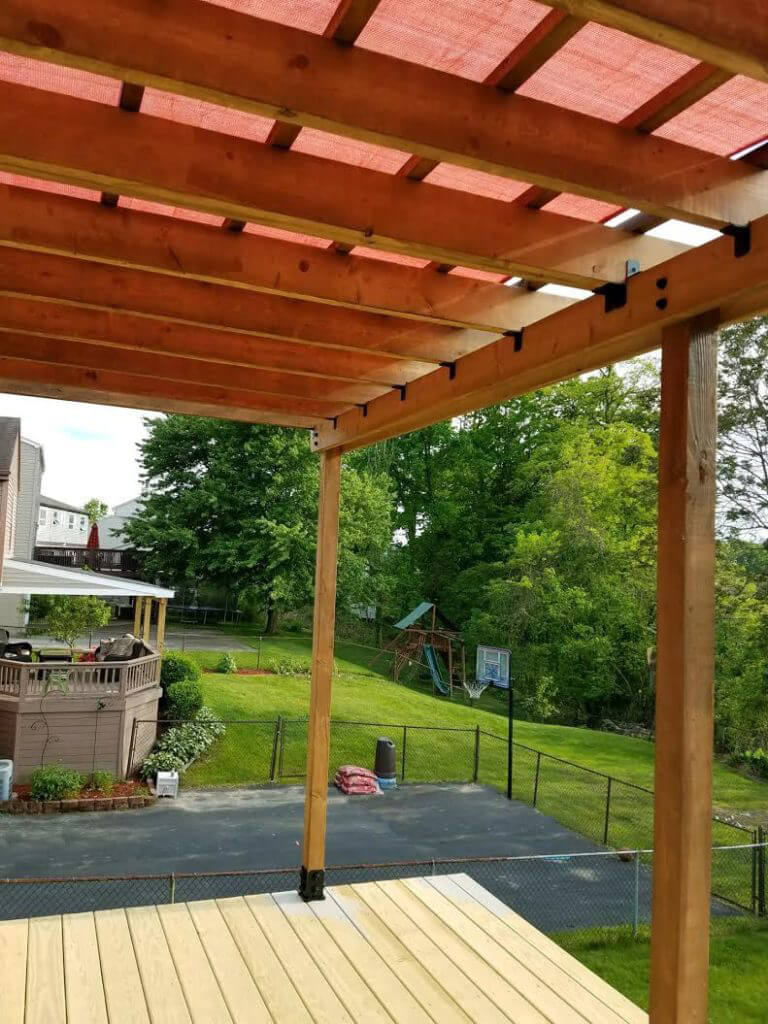

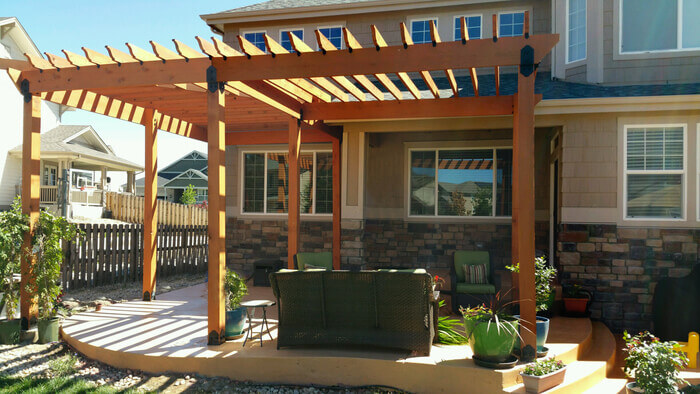


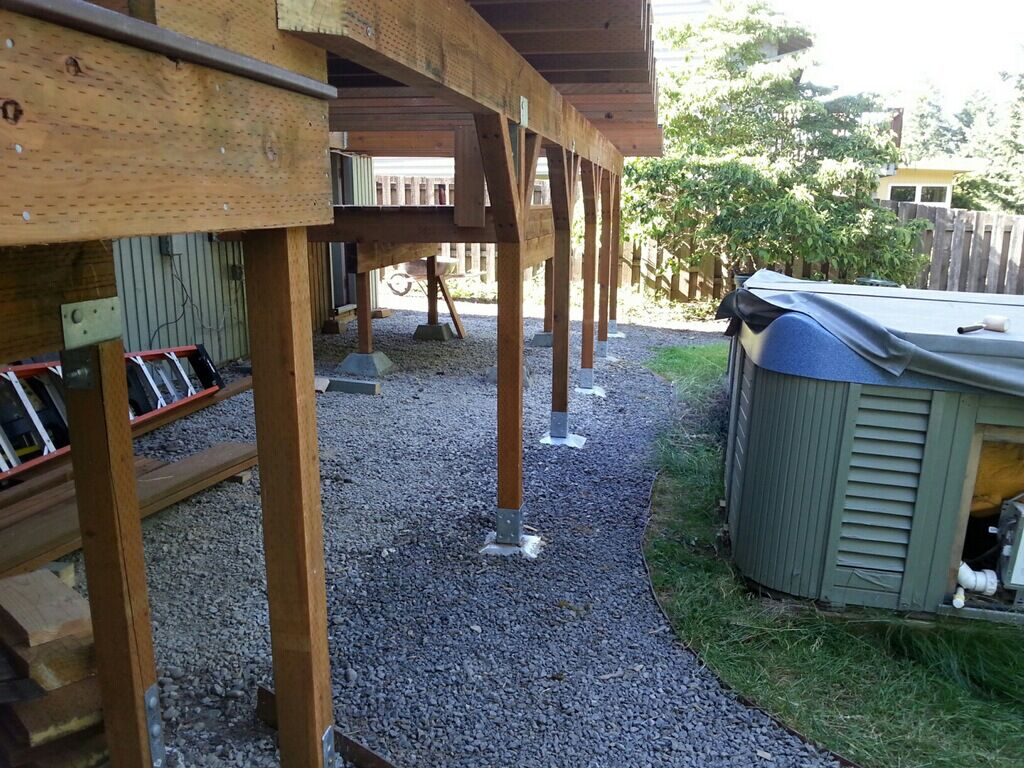
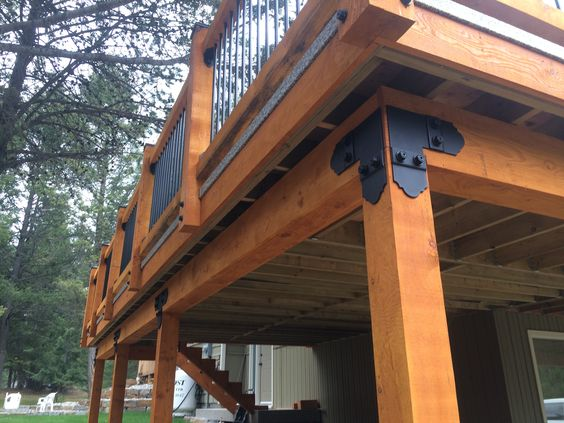


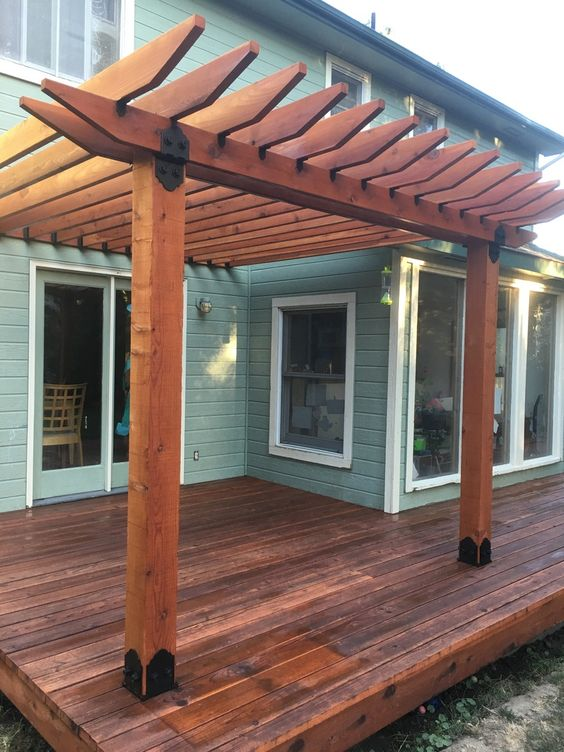

Leave a Reply